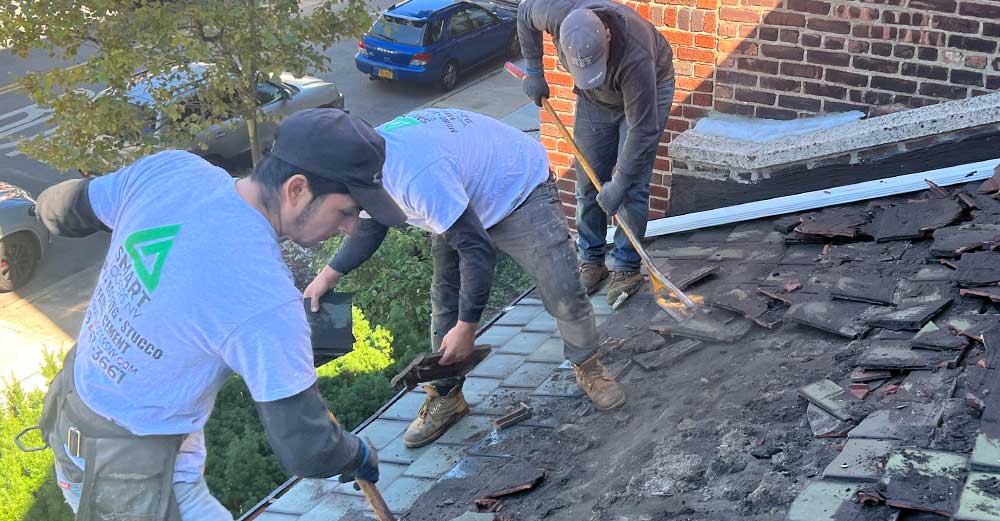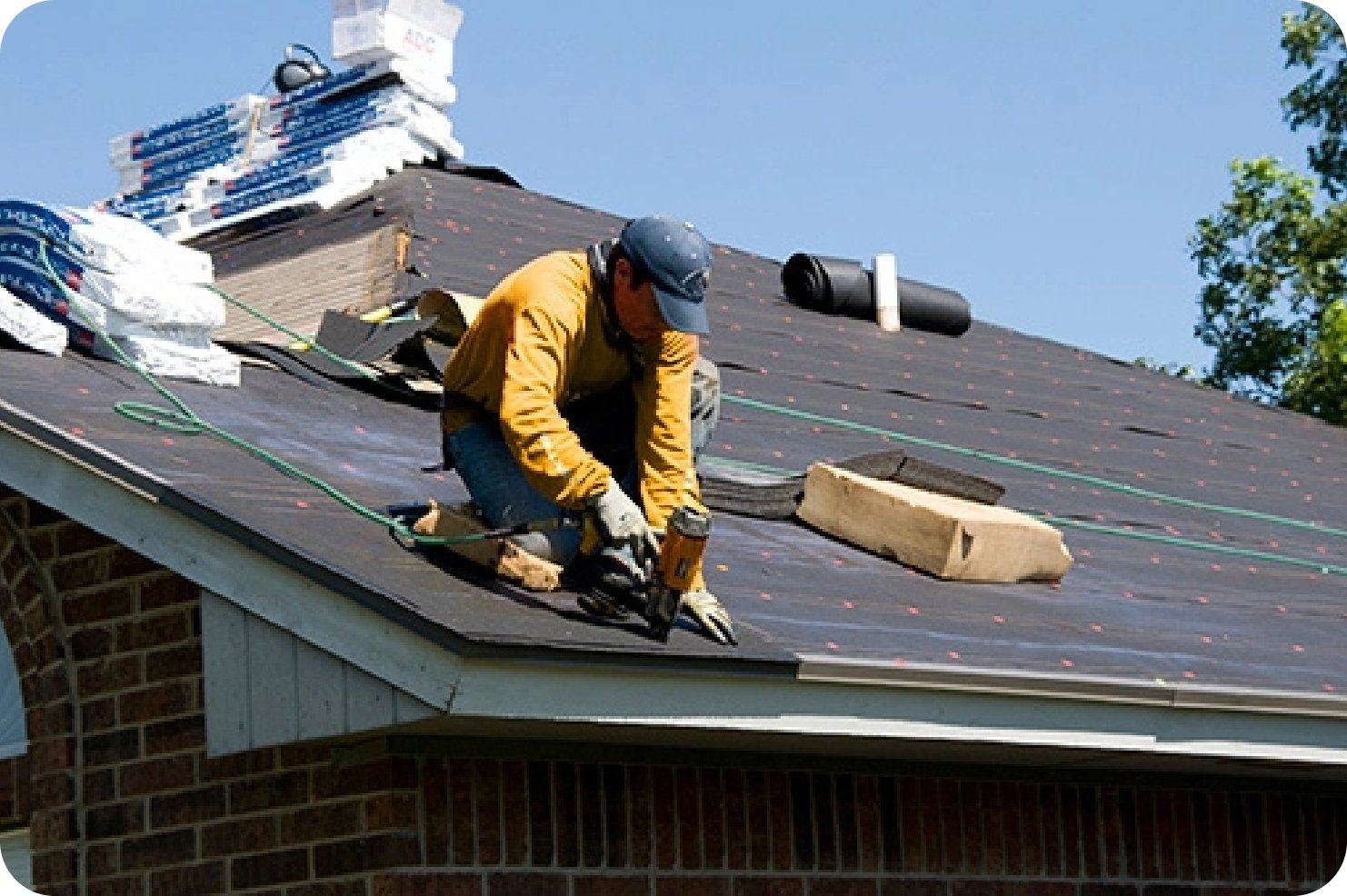Roofing Oahu: Top Quality Solutions for Resilient Roofs in Oahu
Roofing Oahu: Top Quality Solutions for Resilient Roofs in Oahu
Blog Article
Exploring the Numerous Kinds Of Roof Coverings: Which One Is Best for Your Home?
When taking into consideration the myriad sorts of roofing systems available, it is crucial to examine exactly how each choice aligns with your home's unique requirements, including climate conditions, aesthetic preferences, and architectural functionality. From the timeless gable roofing that successfully channels rainwater to the modern-day flat roofing system offering urban adaptability, each design offers unique benefits and obstacles. Moreover, the choice may dramatically impact long-term maintenance and power efficiency. As you contemplate the finest fit for your house, it is essential to weigh these aspects meticulously, specifically as some choices may amaze you with their possible advantages.
Gable Roofs
Gable roofings, identified by their triangular shape and sloping sides, are a popular selection amongst property owners looking for both visual allure and functionality. This roofing style successfully enables for efficient water overflow, decreasing the threat of water merging and succeeding damages. Additionally, the steep slopes create sufficient attic area, which can be made use of for storage and even converted right into living areas.
One of the main advantages of gable roof coverings is their ability to withstand extreme climate condition. The style aids in decreasing wind resistance, making them specifically suitable for areas vulnerable to storms. Moreover, gable roofings can be created utilizing a range of materials, consisting of roof shingles, floor tiles, and metal, giving home owners with adaptability in design and spending plan.
From a building perspective, gable roofs can boost the visual allure of a home, using a classic and traditional appearance. Generally, gable roofs continue to be a preferred choice due to their equilibrium of functionality and design, appealing to a large array of homeowners.
Flat Roofs
While commonly ignored in support of more traditional roof covering designs, level roofs provide unique advantages that satisfy particular building demands and contemporary style choices. These roofs are characterized by their minimal pitch, permitting effective usage of area, specifically in city atmospheres where maximizing square footage is essential.
One substantial benefit of level roofs is their versatility. They can be used as added space, such as rooftop gardens, patios, or solar panel installments, boosting the capability of a home. Furthermore, level roofings are normally less complicated and more secure to navigate during upkeep, promoting repair services and inspections without the obstacles presented by steep inclines.
Level roofings can also be much more cost-effective in regards to materials and installation. With a less complex layout, they typically call for fewer sources, translating right into lower labor prices. Nonetheless, it's important to take into consideration drainage and waterproofing, as flat roofs can be susceptible to pooling water otherwise appropriately made.

Hip Roofs
Hip roofs attract attention for their classy layout and structural stability, making them a prominent option among home owners. Defined by inclines on all 4 sides, hip roofings offer a healthy aesthetic that matches numerous architectural styles - roof repair oahu. The in proportion nature of these roof coverings assists to disperse weight uniformly, enhancing stability and resilience
Among the key benefits of hip roofings is their ability to stand up to harsh climate condition. The sloped surfaces help with effective water drainage and snow runoff, decreasing the risk of leaks and structural damages. In addition, the design minimizes wind resistance, making hip roofing systems much less susceptible to wind uplift contrasted to other roof covering types.


Dropped Roofing Systems
Shed roof coverings, in comparison to the intricacy of hip roofings, provide a streamlined and minimalist style that appeals to contemporary visual appeals. Identified by a single sloping surface, shed roofs are commonly made use of in contemporary architecture, garden sheds, and other functional frameworks. This simplicity not only boosts visual charm however also enables effective water drainage, making them ideal for different climates.
Among the primary benefits of shed roofing systems is their cost-effectiveness. With fewer products called for and an uncomplicated installation procedure, homeowners can conserve both time and cash. The layout additionally allows the unification of huge home windows or skylights, advertising natural light and producing sizable interiors.
Nonetheless, it is important to consider the prospective disadvantages, including limited insulation options and the demand for careful layout to avoid excessive warm buildup. In addition, dropped roofing systems may not mix effortlessly with conventional architecture, which could be an issue for some property owners.
Eventually, shed roof coverings provide a functional and fashionable roof service for those looking for modernity and efficiency. When selecting a roofing system kind, evaluating personal useful needs and aesthetic choices will direct property owners to the most effective option for their distinct needs.
Mansard Roofing Systems
Mansard roofing systems, characterized by their distinctive four-sided design, are a characteristic of French architecture that incorporates style with performance. This building design includes two inclines on each side, with the reduced incline being steeper than the top one. The unique setup enables added space in the top levels, making it a perfect option for homeowners seeking to make best use of usable area without broadening the structure's impact.
One of the linked here substantial benefits of a mansard roof covering is its adaptability. It can be adapted to different building styles, from standard to modern-day, boosting the aesthetic appeal of any type of home. In addition, the sufficient space produced under the roof covering can easily accommodate dormer windows, which allow for all-natural light and ventilation, further boosting the comfort of the living location.
Nonetheless, potential homeowners should think about the upkeep requirements linked with mansard roofings. Installment costs might be greater contrasted to easier roofing system styles due to the complexity of building and construction.
Final Thought
Each roof style presents unique benefits, such as the performance of gable roof coverings, the modern allure of shed browse around these guys roofs, and the stability of hip roofings. Level roof coverings offer usefulness for metropolitan settings, while mansard roof coverings offer added living space despite higher setup expenses.
From the classic gable roofing system that effectively channels rain to the contemporary level roof covering offering urban flexibility, each style presents unique benefits and obstacles (roof repair oahu). Additionally, the style decreases wind resistance, making hip roofings less susceptible to wind uplift compared to other roofing system kinds
Dropped roofs, in comparison to the complexity of hip roofings, provide a streamlined and minimal style that appeals to contemporary visual appeals. Each roof covering style presents distinct advantages, such as the efficiency of gable roofings, the modern charm of shed roof coverings, and the stability of hip roof coverings. Flat roofing systems offer practicality for urban settings, while mansard roofing systems give extra living room despite greater installment Read Full Report expenses.
Report this page